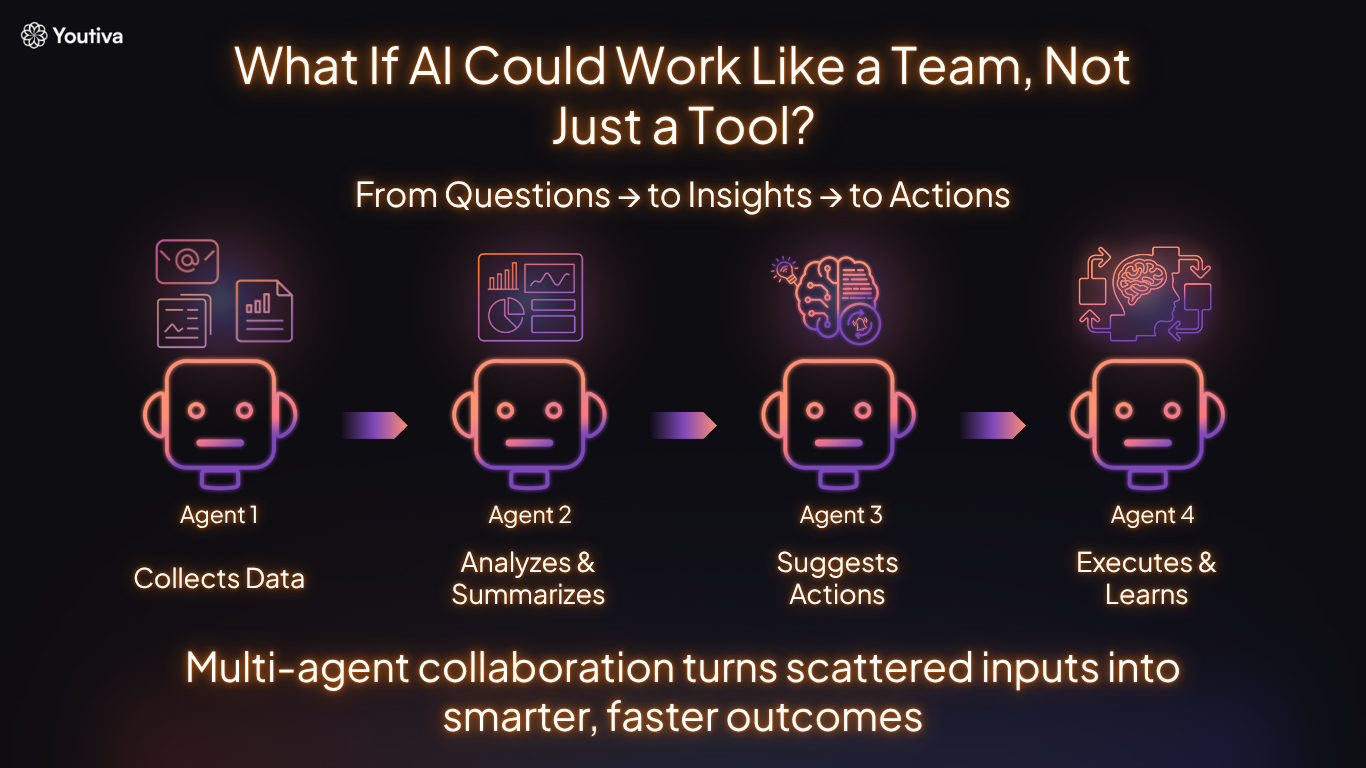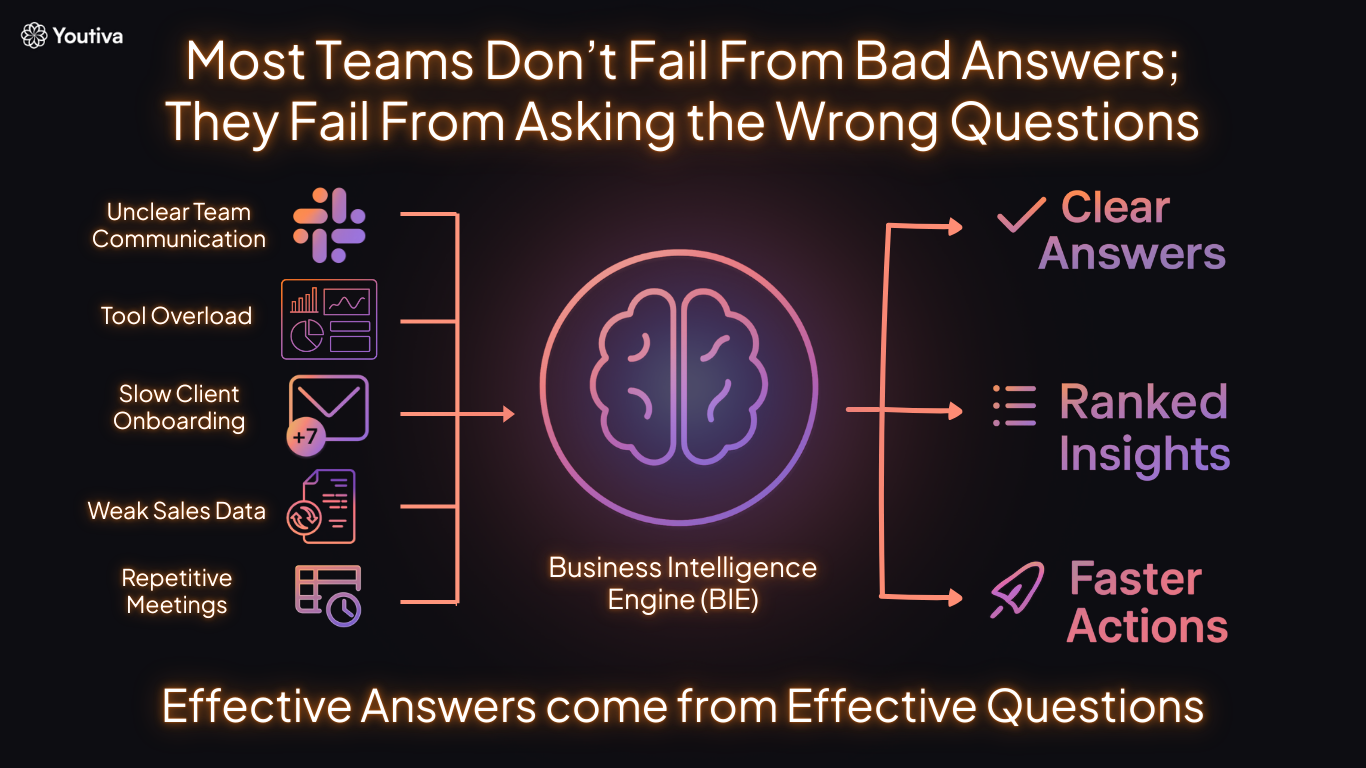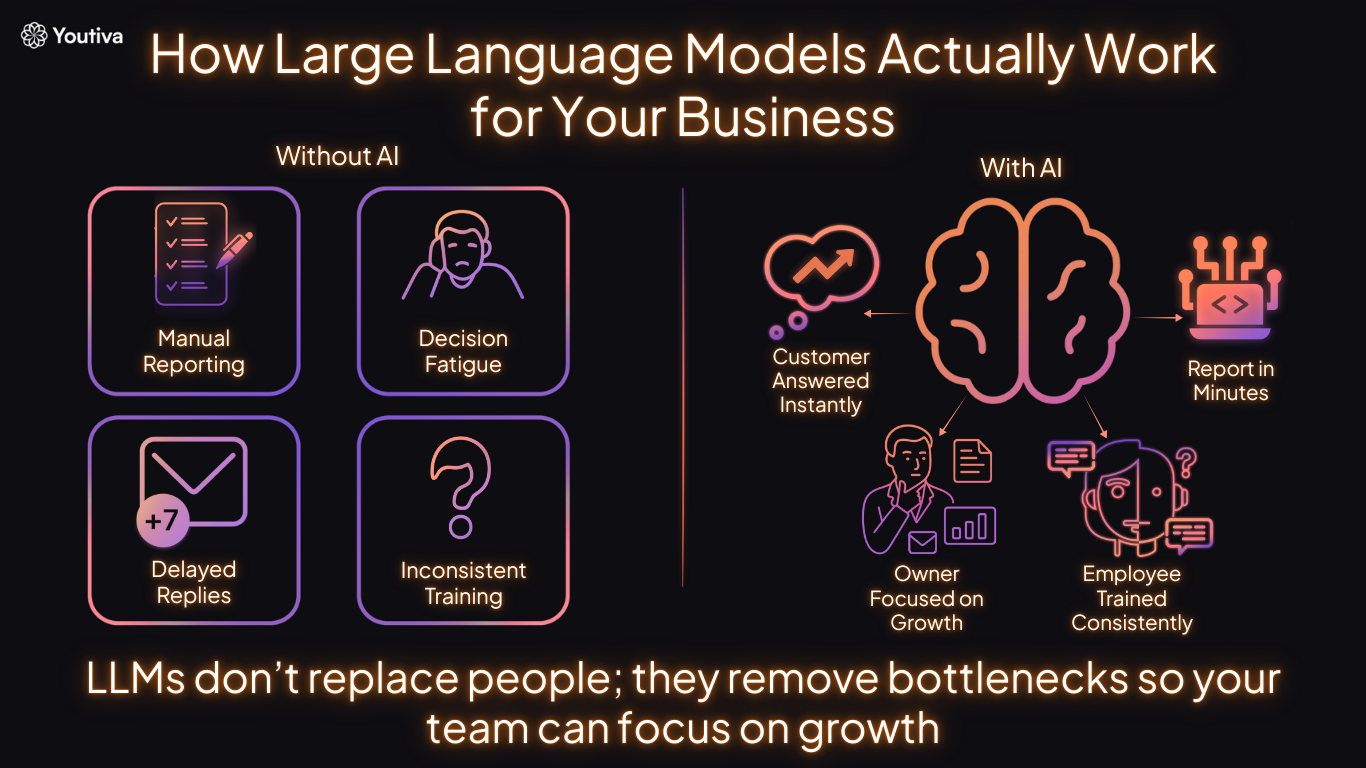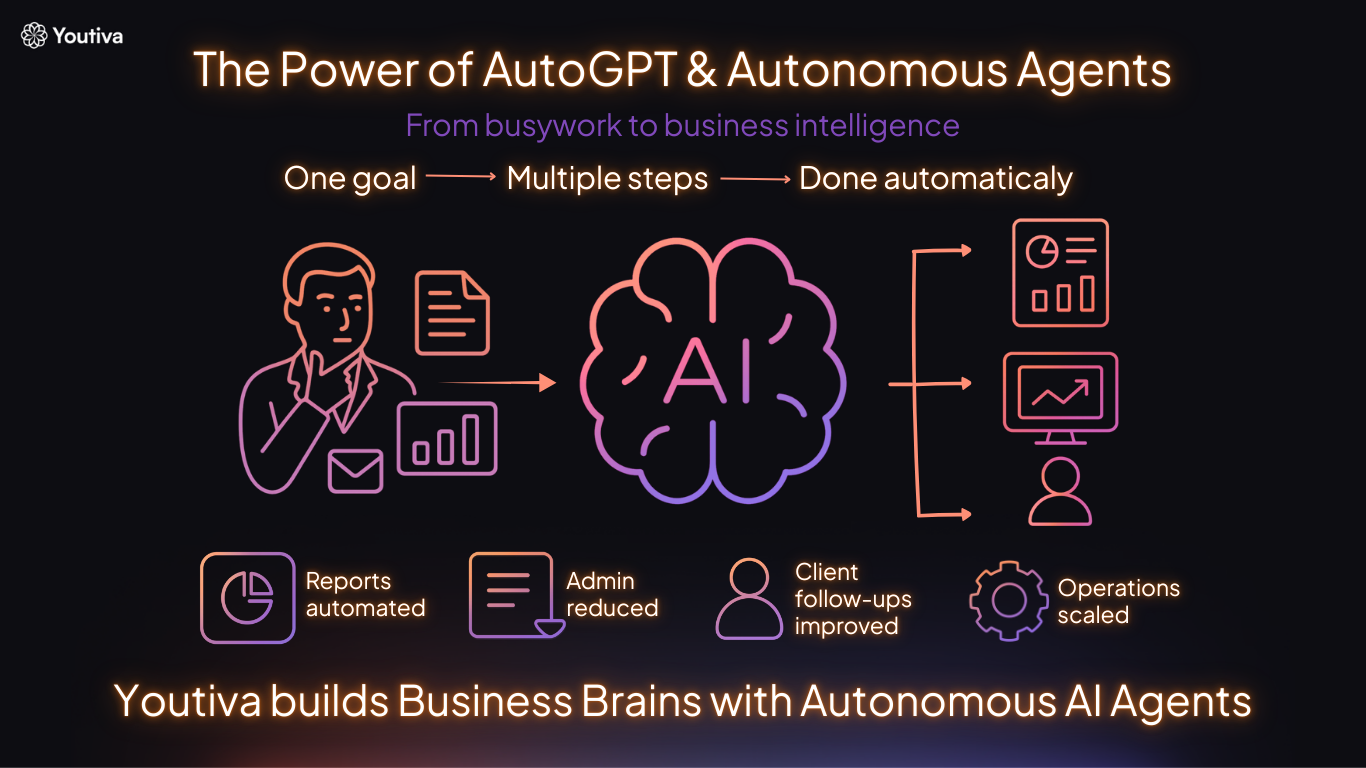What If AI Could Work Like a Team, Not Just a Tool?

You don’t need more people. You need smarter workflows.
Right now, most businesses are slowed down not by lack of talent, but by how work moves. Tasks bounce between people. Reports wait for someone to “get around to it.” Systems don’t talk to each other. And highly skilled employees spend half their day chasing low-value tasks.
The result? Delays, rising costs, human errors, and slower decisions, all while competitors move faster.
But there’s a new way forward: Multi-Agent Collaboration.
Instead of one chatbot that gives answers, imagine several specialized AI “agents” working together like a real team, pulling data, analyzing it, acting on it, and keeping the flow moving 24/7.
The Pain Points Slowing Teams Down
1. Tasks That Bounce Between Team Members
Sales pulls numbers → ops reviews them → finance updates → leadership approves. Each step waits on someone.
Why it hurts: Projects stall. Deals move more slowly. Opportunities slip.
2. Tools That Don’t Talk to Each Other
Your CRM, spreadsheets, project tracker, and email all live in silos.
Why it hurts: People become the “glue”, manually moving info between systems. Errors creep in.
3. High Effort, Low Output Work
Smart employees spend hours copy-pasting data, formatting reports, or rewriting emails.
Why it hurts: You’re paying for strategy, but getting admin.
4. Too Many Dashboards, Not Enough Decisions
Your data lives everywhere, but no one has time to interpret it.
Why it hurts: Meetings get longer. Decisions get slower. Growth gets stuck.
5. Over-Reliance on Human Glue
Without the “hero” who remembers all the steps, things fall apart.
Why it hurts: Burnout risk rises. Scaling becomes impossible.
The Solution Path: Multi-Agent AI Collaboration
Think of multi-agent systems as digital departments.
- One agent handles research (pulls from CRM, docs, or spreadsheets).
- Another agent analyzes the data and summarizes insights.
- A third agent acts, updating records, drafting an email, or generating a report.
They hand off seamlessly, like teammates. No waiting, no reminders, no errors.
OpenAI recently introduced multi-agent collaboration frameworks, showing how specialized AIs can complete complex workflows by working together
Before vs. After
Before (Manual Workflow):
- Ops manager exports data from CRM.
- Analyst cleans it in Excel.
- Marketer pulls highlights for email.
- Exec reviews and edits.
- The whole process takes 3 days.
After (Multi-Agent Workflow):
- Agent A pulls CRM data.
- Agent B analyzes and flags trends.
- Agent C drafts client update email.
- Exec reviews in 15 minutes.
- The whole process takes under an hour.
Who Benefits Most?
- Agencies: Automate client reporting and onboarding.
- Consultants: Save hours prepping client decks with AI-compiled insights.
- Ops-heavy companies: Keep sales, finance, and ops aligned without manual handoffs.
- Service businesses: Ensure faster follow-ups and consistent customer updates.
McKinsey estimates that generative AI could unlock $2.6–4.4 trillion annually in productivity, much of it by streamlining operations
And Harvard Business Review notes that AI agents will reshape workflows by taking over repetitive, interdependent tasks that eat up human capacity
A Mini-Case: Client Onboarding in Half the Time
Daniel, a consulting founder, dreaded onboarding new clients. His team spent 2 weeks collecting documents, sending reminders, entering data, and preparing welcome packs.
With a multi-agent system:
- Agent A collected and validated client forms.
- Agent B drafted onboarding emails and schedules.
- Agent C updated the CRM and project tracker.
Result: Onboarding dropped from 2 weeks to 3 days. Staff freed 20+ hours weekly. Clients noticed the speed and confidence in the firm skyrocketed.
Start Small: Simple Multi-Agent Wins
- Weekly reporting: One agent pulls data, another summarizes, and another sends the deck.
- Client onboarding: Agents handle form collection, email updates, and system entries.
- Finance ops: Agents pull invoices, cross-check payments, and alert for late accounts.
Even Gartner notes that autonomous agents are moving from “emerging tech” to mainstream use in enterprise operations
Final Thought
The problem isn’t that your team isn’t talented enough. The problem is they’re stuck in workflows that depend on waiting, handoffs, and human glue.
Multi-agent AI systems change that. They work like real teams, but faster, always on, and error-free.
Want to see how a multi-agent system could save your business 20+ hours a week?
Book a call with Youtiva, and we’ll show you where to start.
.png)




